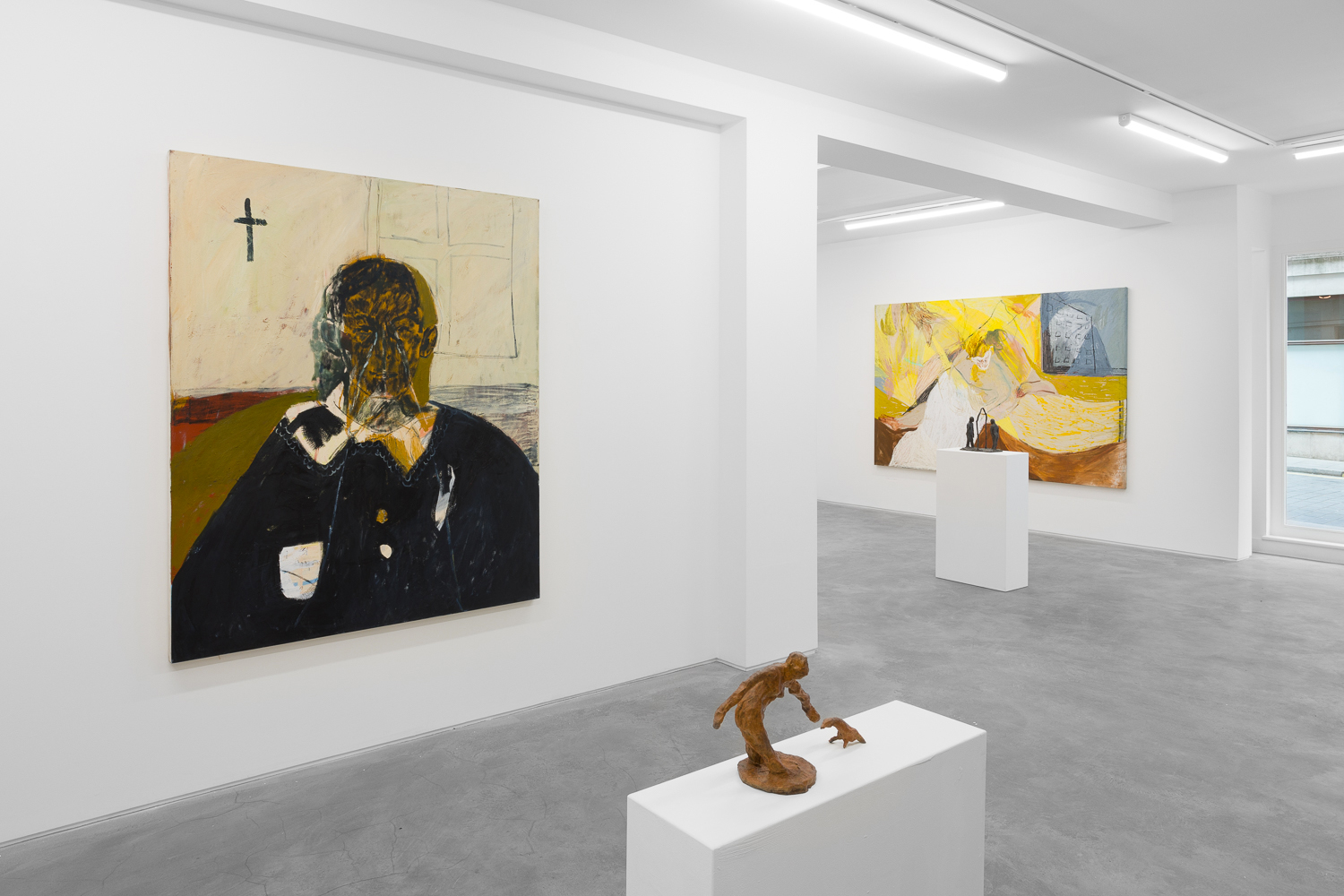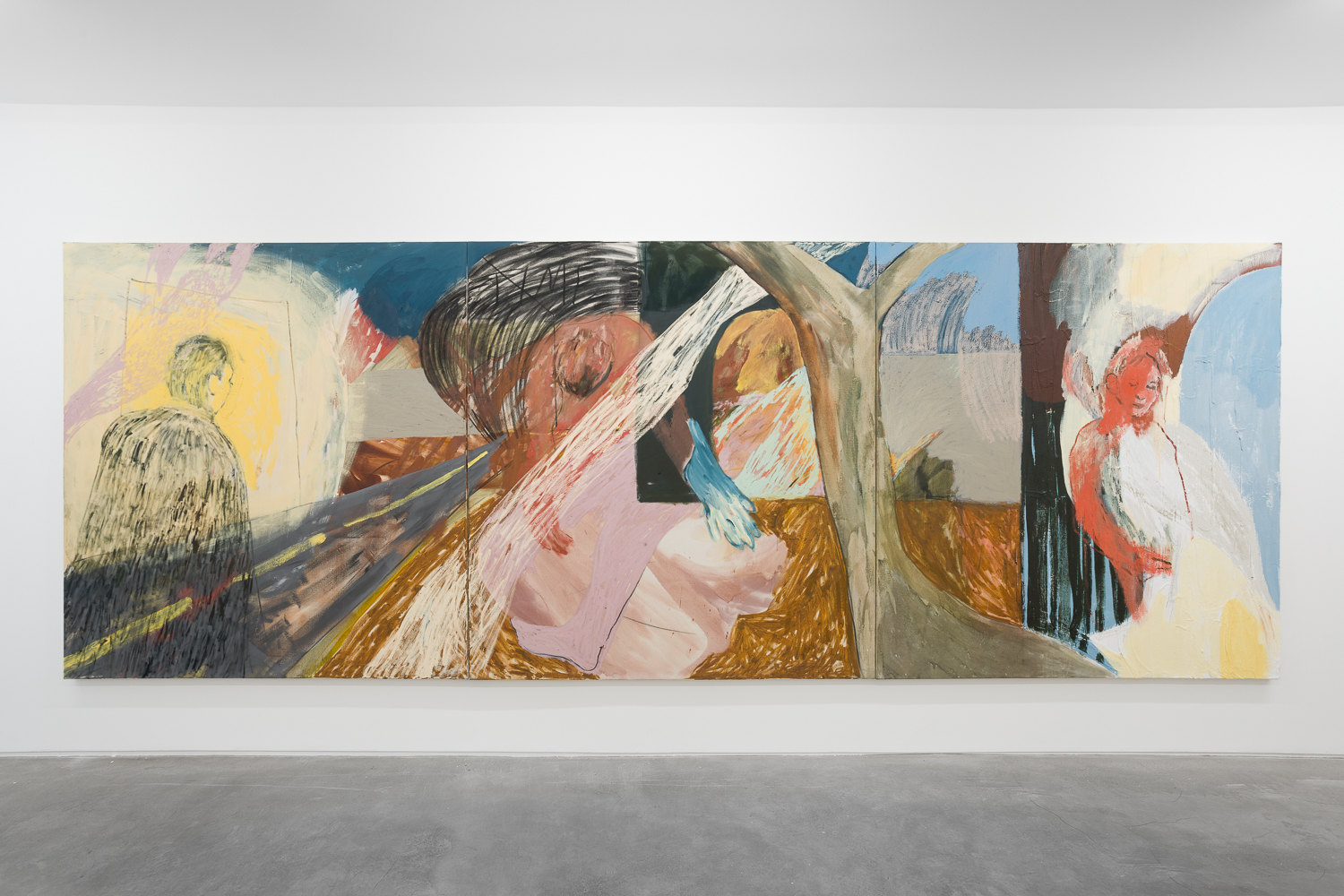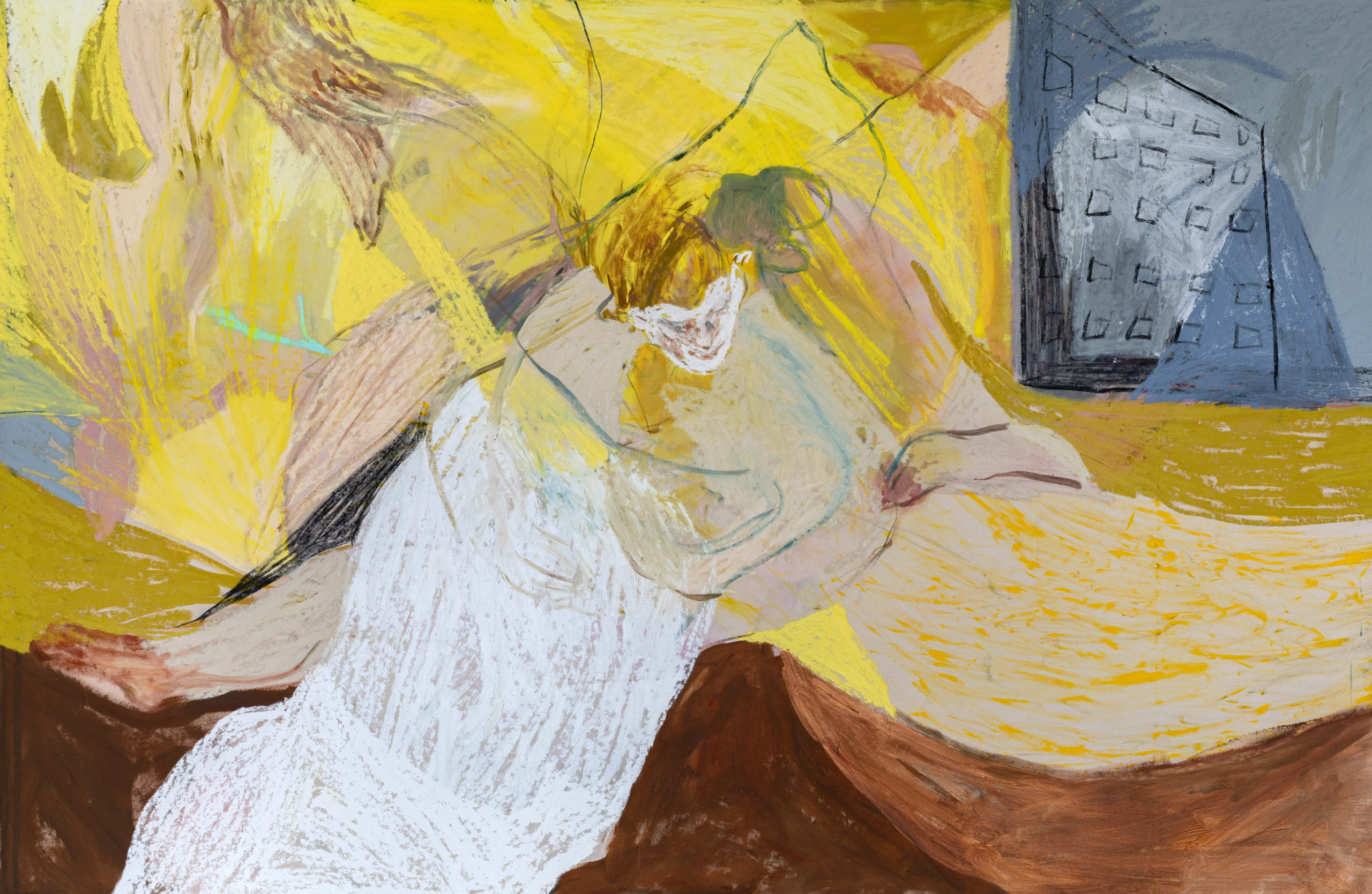Fineman's choreography of mark-making is a constant throughout her works, whether vast painted stanzas, sketchy monotype prints, or delicate miniature bronze sculptures. There are often these sweeping curves or shafts of line that serve to organise the composition. Yet her title of this body of work, Encounters, suggests a chance - a stroke of luck, a pinch of accidental. Something not quite met or acquainted - held, but held fleetingly. A glance, an impression, a passing feeling, a sense of something.
Phoebe Cripps

This text was commissioned on the occasion of Emma Fineman’s 2022 solo exhibition, Encounters. Written by Phoebe Cripps, writer and curator at Goldsmiths CCA, London.
There’s a lemon custard cake I’ve been thinking of making. I read the recipe a few weeks ago; it’s a traditional Roman method of baking a thin layer of sponge cake, then spreading and sealing lemon custard in the middle of another layer of cake, so the centre feels like an unctuous, gooey secret. I haven’t made or eaten this cake yet, but it’s lived in my head and in my phone in an open tab, and now feels familiar to me as I’ve inadvertently glanced at it several times a day. I might never have to actually bake the cake for the cake to feel real for me – to taste the egg yolks, lemon zest, icing sugar marl and feel I am in Rome.
In Emma Fineman’s studio, her large painting Before It’s Over, and Then It Starts signals the same custardy yellow as my Roman cake. At its centre is a similar secret: an embrace between two figures, loosely held in daubs of paint and clinging tightly to each other. Streaks of yellow, russet and white dance around and through this couple, framing and dissolving them. They might be sheltering from this raining paint, or bathing in delicious shards of sunlight. The figure whose back is turned – whose definition is freer – appears to open its face up to the sky, inviting this pouring. The other figure faces us, but also faces downward, inward, at once clutching the other and intensely alone as their partner melts away. It is this solemn figure, in its flashes of white, that initially focuses the eye; patchworked layers of colour then swirl our attention around to the embrace, then the possible outline of a neck and torso of a much larger figure looming behind, and onward to the grey city outside. The steely weight of this window imposes on the scene, literally chopping the corner. It feels much warmer inside the room, yet the artist suggests it might be impossible to stay here.
Fineman’s choreography of mark-making is a constant throughout her works, whether vast painted stanzas, sketchy monotype prints, or delicate miniature bronze sculptures. There are often these sweeping curves or shafts of line that serve to organise the composition. Yet her title of this body of work, Encounters, suggests a chance – a stroke of luck, a pinch of accidental. Something not quite met or acquainted – held, but held fleetingly. A glance, an impression, a passing feeling, a sense of something. Her forms are deeply intuitive, in the sense that there is both deep feeling and chance to intuition; their at times loose outlines convey this sense that bodies and objects might have just appeared to her, making themselves known through sketched brushwork. She tells me she doesn’t always know who these people are at first, and she feels her way towards understanding – perhaps not them, in the way we can never really know another person – but understanding why they have appeared to her, what they might be trying to say. She is also keen to take us with her, and to give us the tools to understand too. For this reason, references to journeys to elsewhere in both place and time – roads, clocks, windows, doorways, sun dials – recur as portals to new forms of knowing.

Emma Fineman. Peripheral Visions (2022)
My cake is a similar form of portal. Lemon cake doesn’t actually take me to Rome, but in holding the recipe I enter into a kind of timelessness and placelessness, where Rome can appear in my kitchen. But beyond that, the recipe offers up a way of understanding process: adding cornflour to thicken custard, whipping eggs and sugar until they bubble thick with air, inverting the whole cake before speckling with icing sugar. The small details of this process conjure images of people making these same gestures repeatedly over years. Cake as time travel: giving me a history of sunlit kitchens, making citrusy magic with simple ingredients.
Emma talks to me in similar words about the humility of paint. About the awe of making a single mark with a brush, and the echo of past artists making this exact same gesture. Paint as a kind of temporal straddling – or what she calls a temporal reaching – is always in the foreground of her mind, and the portals that open up in her compositions are at once disturbingly flat and murkily deep. In Peripheral Visions, the vast triptych that carries viewers through episodic stanzas, open strokes of paint that loosely hold a form might be layered over a flat block of colour, which might give over to a light wash, behind which reveals further depths so lightly and deftly blended to become almost indiscriminate, unknowable colour. It holds so much at once that I try to unbake it with my eyes, to work it out, to return it to its components – my human impulse to order, to understand. There is always much more going on than I can comprehend in a single look. The interplay between flatness and depth feels close to how we live between screens and life, between realities.
In The Exchange, two figures stand either side of what could be a portal, a window, a door- way. The bronze casting anchors their feet to the base, so they appear stuck as if in quicksand, unable to pass through. Emma talks about the speed of digital life: the effect of the flood on consciousness that creates a kind of collective distortion. It can leave me feeling both rootless and rooted in anxiety. Limitless connection in fact appears to be limiting us, closing in our senses of understanding each other and ourselves. The Exchange’s portal could in fact be a mirror, perhaps a reflection of a remembered self.
Memory isn’t as simply reflected, however – something Fineman explores particularly in her monotype prints. Printed artworks are essentially a ghost image, a reversed phantom of the marks the artist made on the etched surface. The process prints us a memory, and more – often small finger- prints, folds in the paper, extra blots. The brain processes a memory only once, when it converts, commits, an event to memory. After this, each time we recall that memory we are in fact remembering the memory, rather than the event. Our association with our past is therefore blotted, and picks up the dust of emotion that changes the imprint of something each time it’s recalled.
Fineman embraces these slippages in time and memory, the imperfections that offer up an impression of feeling more real to life than something overly rendered to appear ‘real’. In this way, she follows and belongs to a group of other female painters like Rose Wylie, Marlene Dumas, and Tasha Amini, all of whom embrace ambiguity on the canvas. Within the difficulty, clear sketched outlines often emerge, which could seem cartoonish or childish but are in fact very precise. Sketchiness is the point! A line can never be the thing it seeks to delineate – can never be the window, the body, the crucifix on the wall – but is always the absolute truth of the artist’s hand. The proof that the artist was here, and that trace will continue to be here in the unchanged relationship between painter and canvas. Our sense of time and our sense of self might slip between realities, but we continue to paint as proof that we are here
(By Phoebe Cripps)
